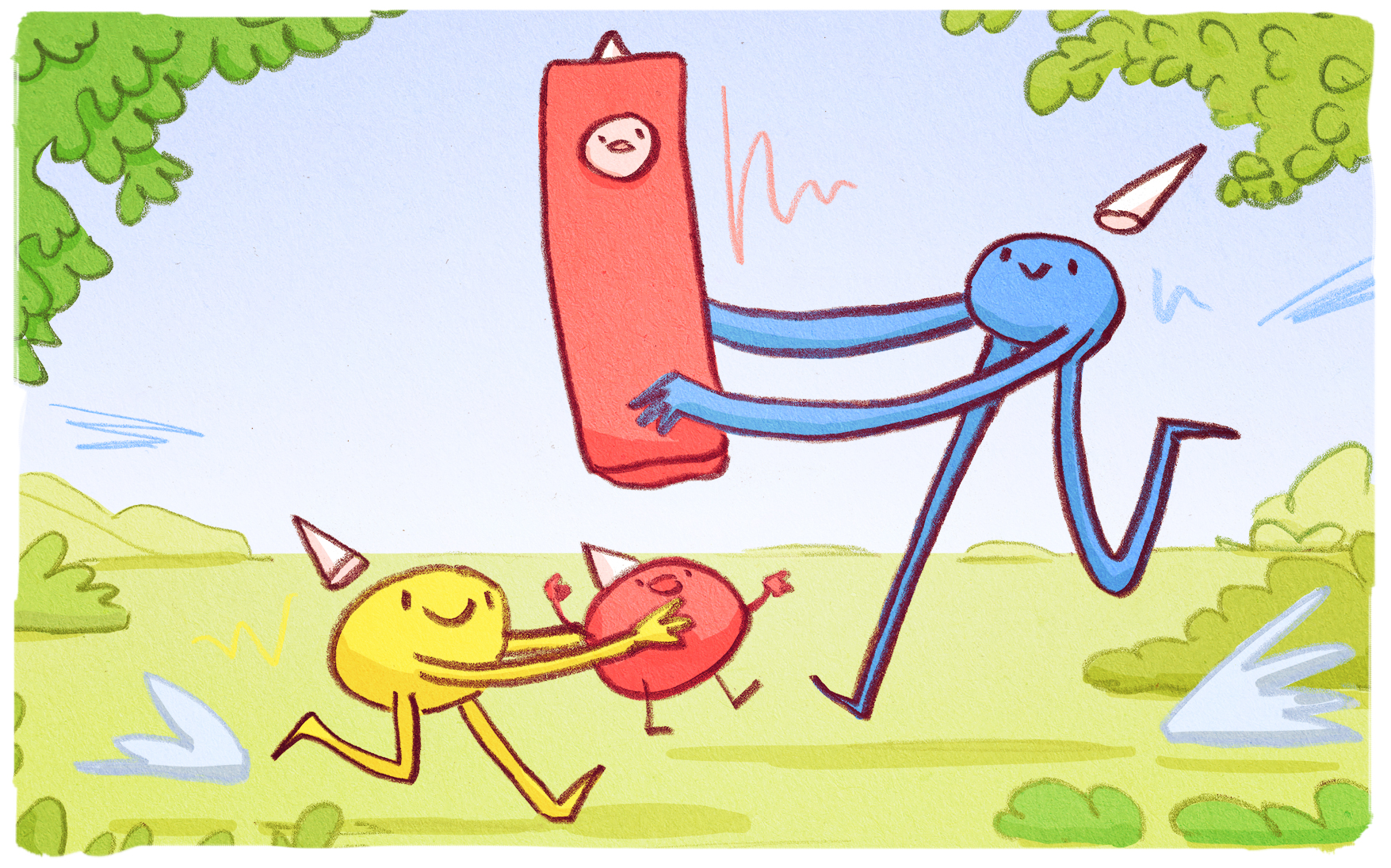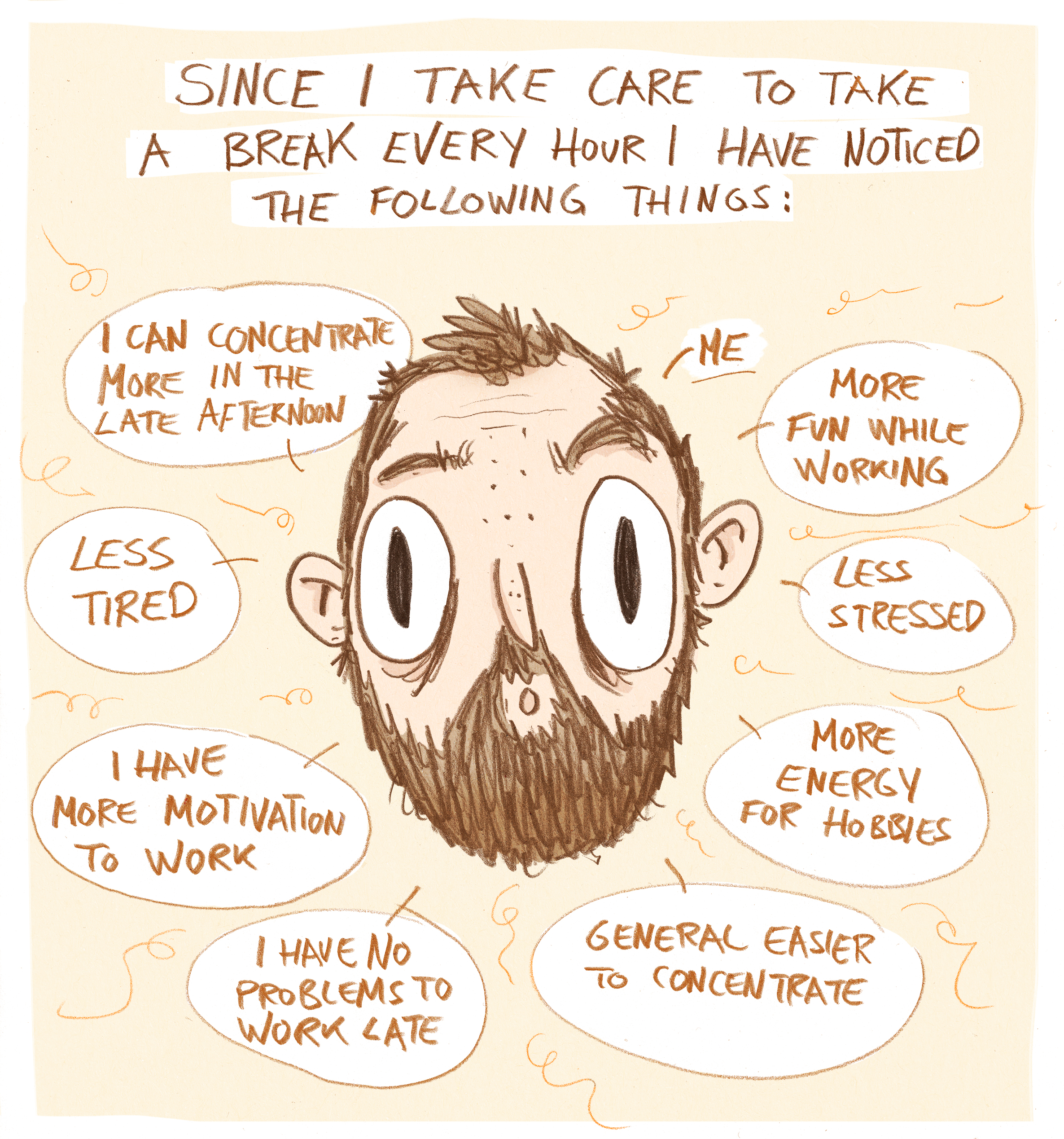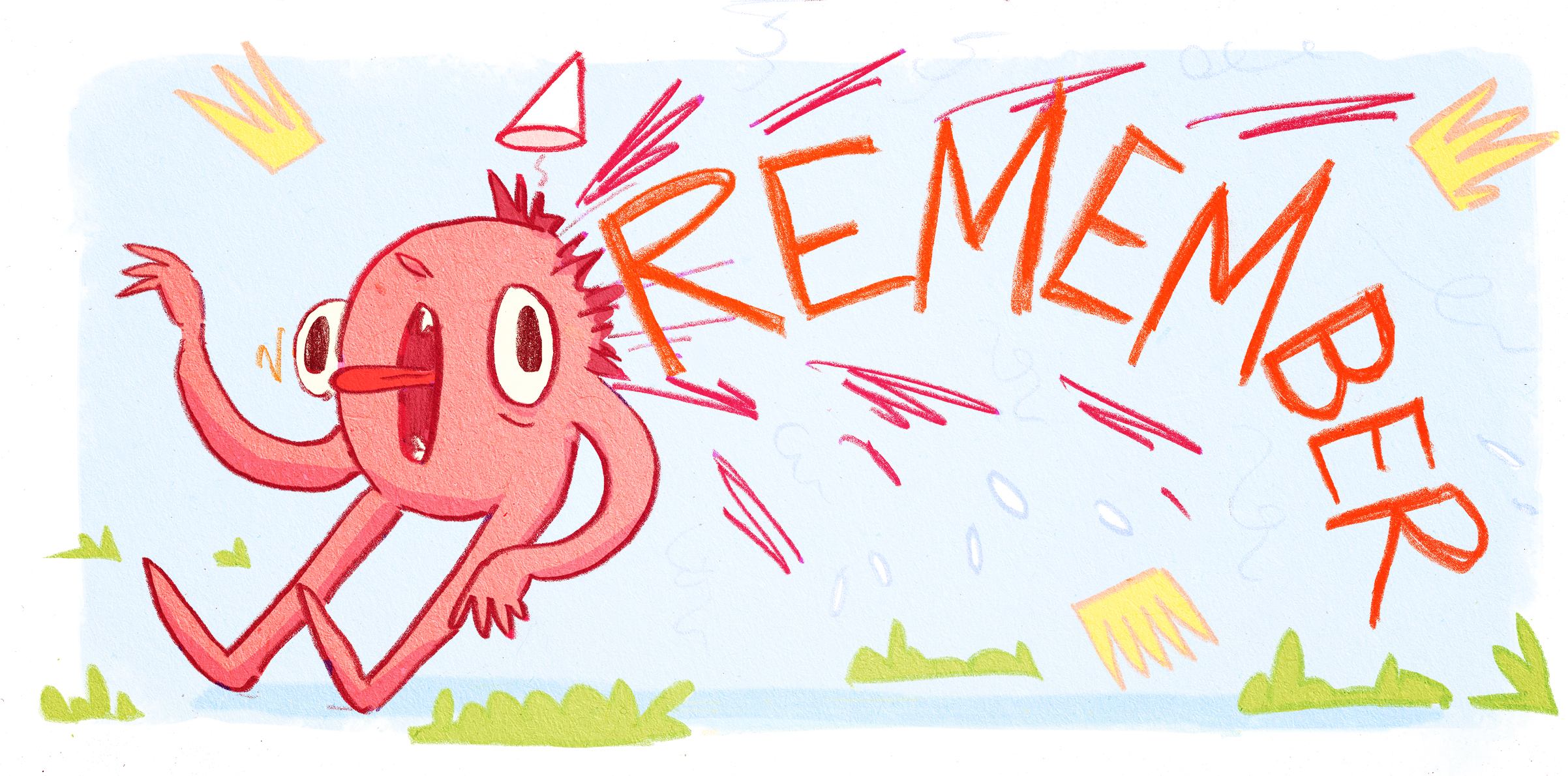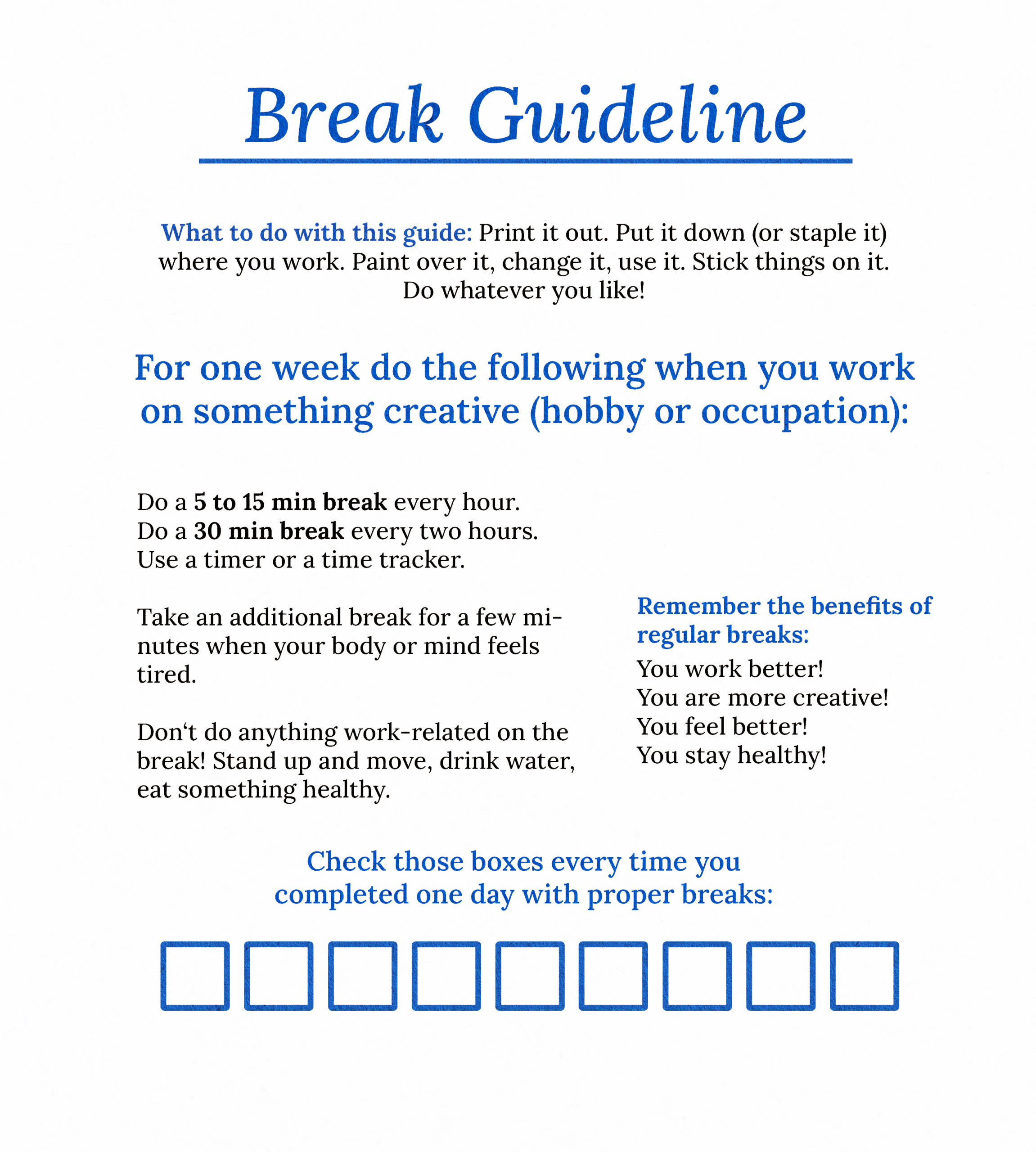Regular breaks contribute to recovery, well-being, and productivity and are necessary to work productively for a prolonged period. Many people demonize taking breaks as a loss of work time. But this is not true. If you take regular pauses, you have many advantages regarding your work.
Why breaks are important:

- A pause in your work is a source of regeneration, to stay physically and mentally healthy.
- The better you have your breaks under your control, the healthier and more efficient you will remain.
- Increases the subjective well-being and the ability to concentrate.
- Increases learning and problem-solving performance.
- You make fewer mistakes after a break.
- Working is more fun with proper pauses.
- And extremely important for creative people: breaks increase creativity!
My personal experience:

How to do breaks and what to do while doing it:

- Every 45 minutes to one hour take a 5 to 15-minute break. After two hours of work take at least a half-hour break. Throughout the day, all the breaks can be as long as one and a half hours. But this is not a big deal, because the pauses allow you to work more productively and with more concentration, so you can easily catch up on the time you “lose” with breaks.
- Look away from the screen, if you are working on digital devices.
- Stand up and move. Stretch a bit!
- Drink water or eat something healthy.
- Do a mindfulness exercise or meditate.
- Take a walk or go out into the fresh air during a longer break.
- You also can do anything!
- Important: Do not think about your work! Detach from what you did before the break or intend to do after the break.
- With the use of so-called micro-breaks, which last less than a minute, you can take a short break between the larger breaks. Look away from the screen or your work and get up for a moment, move around a bit, and then get back to work. Do this little micro-break whenever you feel like it. They can take only a few seconds.
How to remember to take breaks:
Breaks are often forgotten. You are too much in the flow or maybe you think that you have to stay productive at work.

- Use a timer that rings after a certain time. I used “Brain Focus Productivity Timer” from the Google Play Store for a while.
- Use time tracking that you always check from time to time to see how much work you still have to do till the break starts. By using this method you will automatically start to recognize when to take a break. I use the App Toggl Track for that right now!
- Try to make a habit of taking breaks. If you get used to taking a pause every hour, you will start to feel when it is time for another one.
- Are your eyes tired? Do you feel drained? Are you lacking concentration? Does your back hurt? Pay attention to your body and take a break when you need it.
- If you work in a team or have people around you who work with you, you can appoint a “time master” who will ensure all breaks are taken.
What you can do now – A guideline:

Do you have some tips for this topic? Did I miss something important to you? Write it in the comments section below!
References
Blasche, G., Pasalic, S., Bauböck, V.-M., Haluza, D., & Schoberberger, R. (2017). Effects of Rest-Break Intention on Rest-Break Frequency and Work-Related Fatigue. Human Factors, 59(2), 289–298. https://doi.org/10.1177/0018720816671605
Hausmann-Thürig, D. (2019). Vermehrte Minipausen zur Stärkung der körperlichen und psychischen Gesundheit am Arbeitsplatz. (Written thesis from CAS 2018 Gesundheitspsychologische Lebensstiländerung und Mind Body Medicine, University of Zurich)
Tucker, P. (2003). The impact of rest breaks upon accident risk, fatigue and performance: A review. Work & Stress, 17(2), 123–137. https://doi.org/10.1080/0267837031000155949